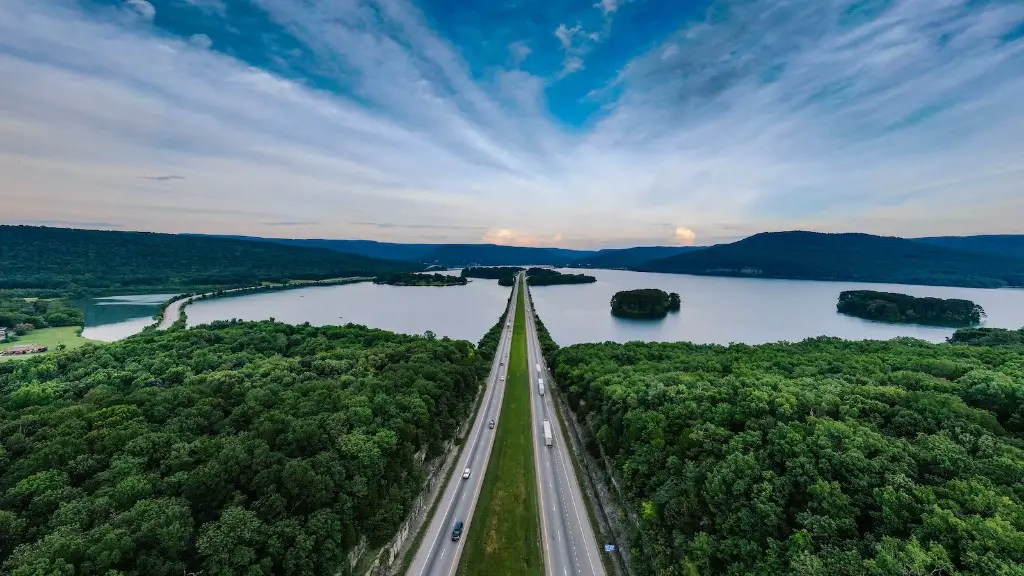Materials Needed
Creating an imitation of the Nile River is not an easy feat, as it is one of the longest rivers in the world. To make a project that is aesthetically pleasing and accurate, certain materials are needed. It is important to have a wooden base in order to make the pieces of the project stand upright and stable. Foamy boards or lightweight pieces of wood cut in the shape of the continental Africa and the Arabian Peninsula can be added to enhance the look of the project. Mesh, cloth, or blue construction paper can be used to represent the river itself. Colored stones or crystals can be used to represent tributaries, as well as vegetation and animal life. Lastly, it is also important to have glue, scissors, colored pencils, and a ruler to help with precision.
Planning the Project
Before beginning the construction of the project, it is important to know what the ideal outcome should look like. To achieve this, it is best to plan out the specifics of the project. This can be done by measuring the length and width of the continent of Africa and the Arabian Peninsula, as well as the length of the Nile River. It may also be a good idea to customize the project further by adding certain characteristics to parts of the river. For example, one could experiment with different stones to represent the various rapids or small islands present in the Nile River. Planning the project in this way ensures that the final product is both seamless and accurate.
Constructing the Project
Now that all the materials are gathered and the project is planned, it is time to start putting it together. The first step is to construct the wooden base of the project. This is done by cutting a piece of wood in the desired size and shape, then drilling holes at the corners for dowels that will be used to hold it in place. This will also act as a foundation for the other elements. Once the base is ready, the second step is to affix the foam board or lightweight wood cutouts of Africa and the Arabian Peninsula onto the base, using the glue.
Next, the mesh or cloth is added, painted with blue paint, or covered with the blue construction paper to make the representation of the Nile River. The best way to achieve this is to draw a thin strip of glue along the edge of the continents to hold in the fabric. The colored stones, vegetation, and other elements can then be added as desired. A ruler or measuring tool may be used to ensure accuracy in the placement of these elements.
Adding Details
The project is looking closer to completion now, but some details are still needed to bring it to life. Applying colored pencils to the continents, foam board, and the other elements of the project is the best way to do this. This will give an overall effect of the continent and surrounding bodies of water. Additionally, the river can be highlighted or be otherwise emphasized to make it stand out. Vegetation and animal life can also be added to the project using appropriate colored paper cutouts.
Finishing Touches
The final touch of the project is to seal it. If the components used in the project are lightweight, then a coat of sealant must be applied to add strength to the project and make it more durable. This will also help to reduce the risk of the glued pieces coming apart or shifting with time. The project is now ready to be displayed in a museum or an educational centre.
Alternatives
In addition to making a project out of wood, cloth and stones, there are other options that allow for greater accuracy in the representation of the Nile River. These include using a larger wooden base and layering pieces of sand and blue oil paper over it to resemble the flow of the river. This will require more attention and precisely drawn paths to ensure accuracy.
Another option is to use a software to design the project in its entirety. This will also allow for more detailed representation of the continent, the Arabian Peninsula, and the numerous tributaries in the Nile River. Google Earth is a great tool to look at the in-depth geographical features of the river that can be added accordingly.
Conclusion
Making a project of the Nile River is a great way to learn more about the relationship between the geological characteristics of the continent and its many fauna and flora. It is a great learning experience that any student, amateur geologist, or geography enthusiast will enjoy. With enough planning, supplies, and a vision in mind, anyone can create a beautiful, accurate representation of one of the world’s largest and longest rivers.

